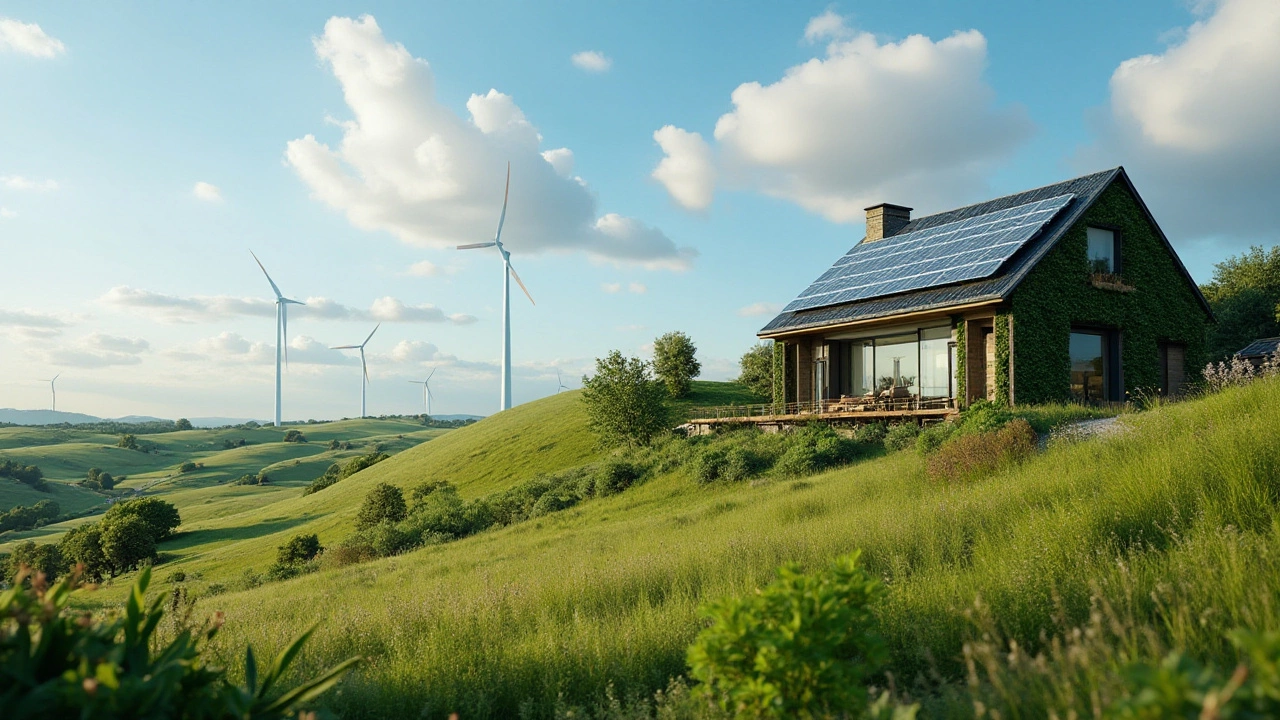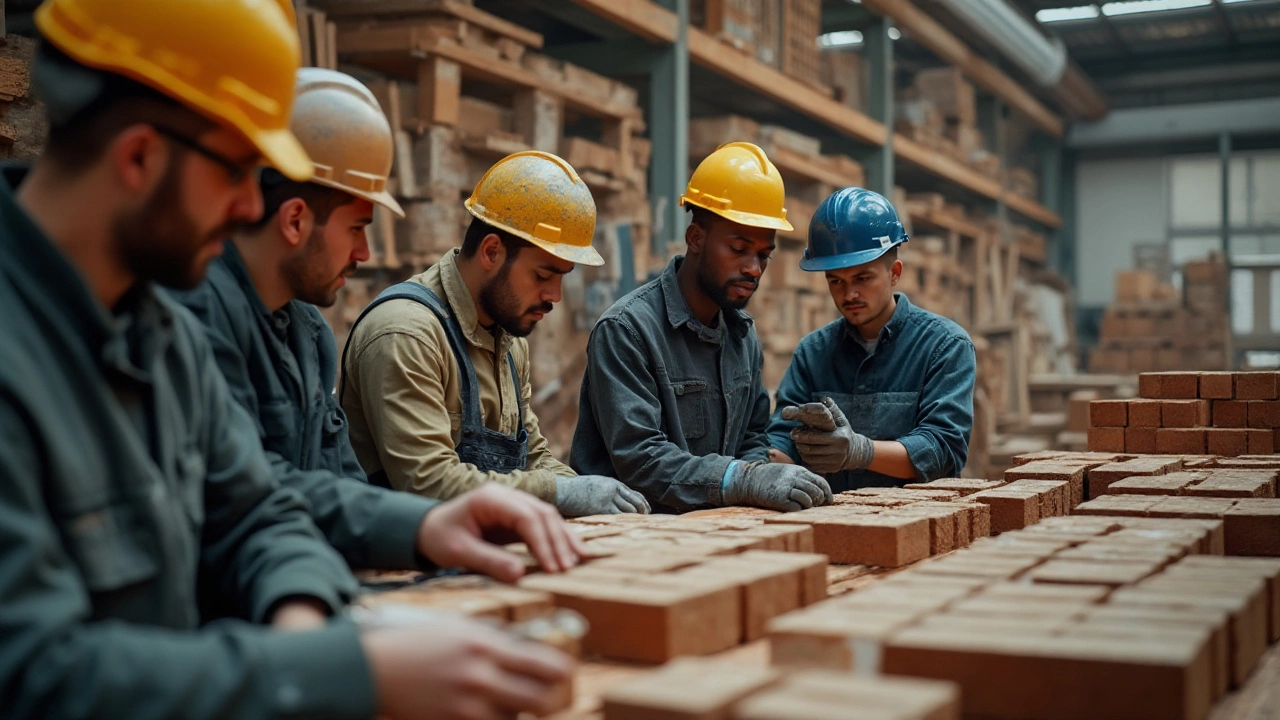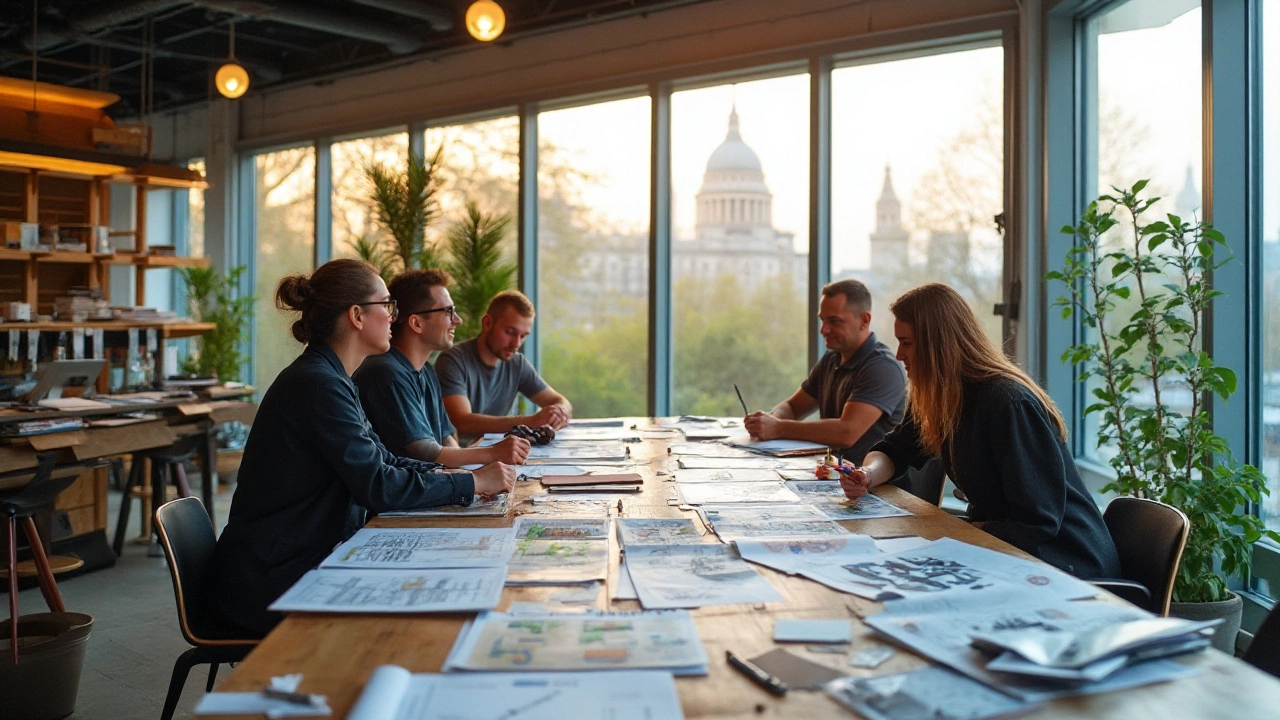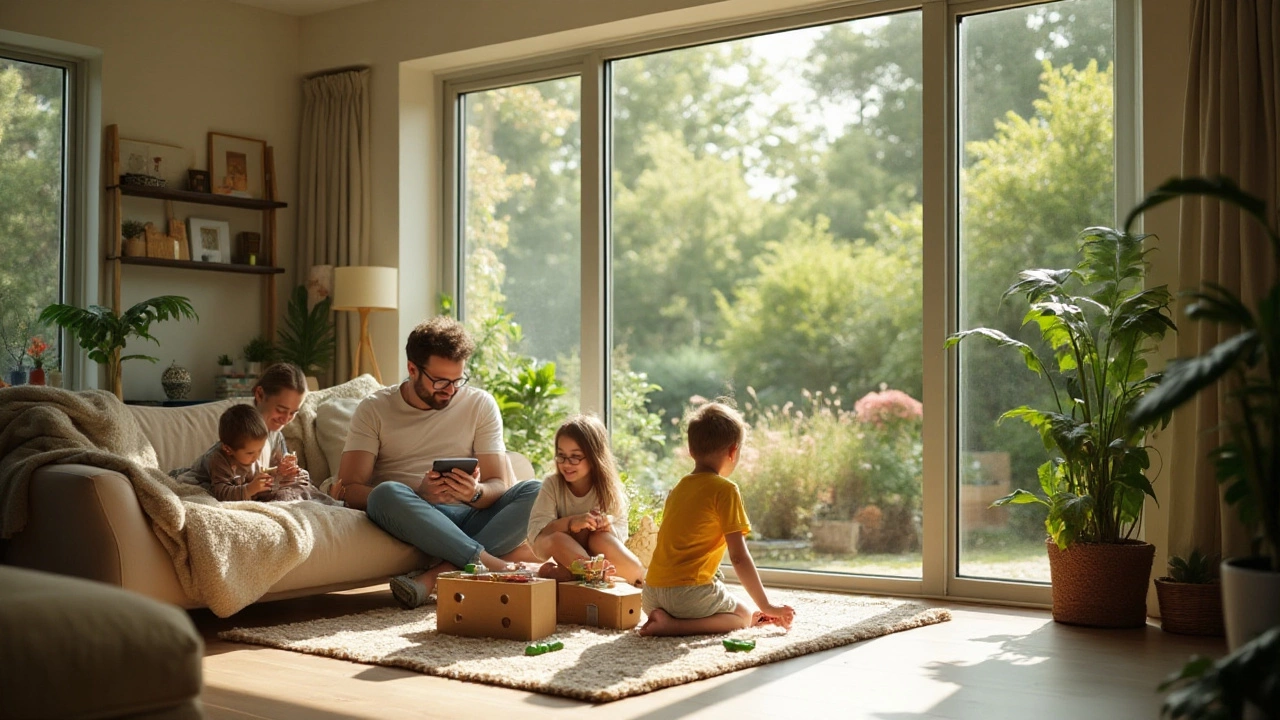Navigating the Challenges of Building Eco-Friendly Cottages
 Jan, 28 2025
Jan, 28 2025
Embarking on the journey to create an eco-friendly home brings with it a unique set of challenges and opportunities. While the vision of a sustainable and green residence is increasingly appealing, stepping into this project requires careful planning and awareness of potential hurdles. Navigating issues such as costs, sourcing responsible materials, implementing efficient energy systems, and adhering to local regulations can initially seem overwhelming.
Yet, with a solid understanding of what lies ahead, aspiring builders can tackle these limitations with creative solutions and a commitment to environmental stewardship. Whether it’s considering how to keep the budget in check, choosing the right eco-friendly materials, or figuring out the best ways to incorporate energy-efficient systems, the path to an environmentally responsible cottage is one of discovery and dedication. Exploring these aspects not only raises awareness about sustainable living but also empowers individuals to take meaningful steps towards building homes that harmonize with nature.
Cost and Budget Constraints
Undertaking the construction of an eco-friendly home involves navigating the rocky terrain of budget management which can often be a significant hurdle for many aspiring sustainable homeowners. The initial outlay for such projects may seem intimidating at first glance, especially when compared to conventional building methods. This cost disparity often stems from the premium pricing of sustainable materials and advanced technologies, which tend to have higher upfront expenses. Historically, materials such as reclaimed wood, bamboo flooring, and solar panels were comparatively rare and priced at a premium. However, the times are changing rapidly with more manufacturers producing eco-friendly products, slowly but surely driving costs down.
A crucial point to understand is that the expenditure associated with creating a green architecture might yield cost benefits in the longer term. Energy-saving appliances and renewable energy installations, although initially costly, have the potential to significantly reduce utility bills over time. In fact, many homes that incorporate solar energy eventually reach a breakeven point where the initial investment pays off through lower electricity costs. To take full advantage of such savings, it’s wise to perform a cost-benefit analysis on potential upgrades and technologies.
"Switching to a renewable energy source and investing in energy-efficient appliances might seem expensive upfront, but they hold the potential to cut energy costs by up to 60%." — Green Building Council
Another aspect to consider is the layering of incentives and credits offered by governments encouraging the adoption of green building practices. Many regions offer tax credits, rebates, or grants for sustainable building efforts, which can ease the financial burden significantly. It’s important for homeowners to delve into these benefits and incorporate them into overall cost planning. Additionally, banks and financial institutions are increasingly recognizing the value of eco-friendly cottages and may offer favorable financing terms and mortgage rates for these projects. Some innovative financing models like energy-efficient mortgages allow inclusion of energy-saving measures into the terms, easing initial costs.
Planning meticulously for surprises along the way is key to managing costs effectively. It’s not uncommon for sustainable projects to face unforeseen challenges and expenditures, whether from unexpected material shortages or delays in project timelines. Budgeting an additional 10-15% of the project cost as a contingency can help cushion such unexpected financial blows. Drafting a realistic budget that accounts for all elements including permits, labor, and potential delays is essential. This strategic foresight ensures projects remain financially feasible while achieving the aesthetic and functional goals envisioned.
Collaboration with experienced green architects and builders is essential as they bring a wealth of knowledge to tailor the project within budgetary limits without compromising on sustainability goals. An experienced professional can offer insights on cost-effective solutions and innovative materials that reduce spending while enhancing eco-friendliness. Their input can transform an otherwise daunting process into a more manageable and rewarding endeavor.

Materials and Resources
The journey towards building a truly eco-friendly cottage is paved with careful thought and strategic choices, beginning with the materials you use. Selecting sustainable materials is crucial not only for minimizing your environmental impact but also in creating a home that seamlessly blends with its natural surroundings. Popular eco-friendly building materials include reclaimed wood, bamboo, straw bales, and recycled metal, each with its unique benefits and aesthetic appeal. For instance, learning that bamboo grows remarkably faster than traditional timber makes it an attractive option for construction enthusiasts who prioritize sustainability.
Reclaimed wood serves a dual purpose: it reduces the need for additional logging while delivering a distinctive, rustic charm to your humble abode. Understanding the implications of sourcing these materials responsibly entails knowing their journey from origin to construction site. This demand for transparency has prompted suppliers to embrace certifications like the Forest Stewardship Council (FSC) label—a mark that assures responsible forestry practices. Harking back to the essence of environmentally focused architecture is a return to utilizing local resources which engage the community and enrich the building process.
Infusing a creative synergy and a keen eye towards innovation, the integration of smart materials opens new possibilities. Consider, for instance, clay-based paints or low-VOC finishes that introduce health benefits by improving air quality. Historical successes become particularly inspiring when you realize how new methods contribute to sustainable edifices. The transformation of discarded materials like rubber tires into functional home elements exemplifies the ingenious ways waste has become a valuable resource. Opting for these unconventional elements can lead to striking yet practical design choices. Yet writers such as William McDonough once argued, "Design is the first signal of human intention," emphasizing the influence that each choice holds on the broader environmental landscape.
Besides, there’s no denying the empowering nature of selecting recycled materials. It's reminiscent of times when building was deeply tied to resourcefulness and environmental balance. Throughout this endeavor, nothing demonstrates commitment more aptly than a holistic approach, where each resource is chosen for its energy efficiency, durability, and environmental harmony. Importantly, these conscious decisions cascade into a lifestyle that reflects an appreciation for nature’s offerings, ensuring your humble cottage stands as a testament to sustainable living. By advocating for collaborative interactions with eco-minded suppliers and builders, you're creating an ecosystem built on mutual sustainability goals. An insightful fusion of old and new paving the road for innovation in green design continues to thrive as a key trend in sustainable building.

Energy Efficiency
Achieving energy efficiency in an eco-friendly cottage is tantamount to ensuring a harmonious balance with our environment while delivering a sustainable living experience. Many homeowners are discovering that making efficient use of energy does not merely mean saving on electricity bills but embracing practices that significantly reduce the carbon footprint. One prime aspect is the architectural design which plays a pivotal role in managing energy consumption. Designing homes with ample natural lighting and ventilation can drastically reduce reliance on artificial heating and cooling systems. The principles of passive solar design, which include strategically placing windows and using thermal mass, can help regulate indoor temperatures effectively.
Another critical component in the pursuit of energy efficiency involves the selection and integration of renewable energy sources. Solar panels have become immensely popular owing to their ability to generate electricity right on the premises. For those living in areas with adequate wind conditions, small wind turbines may present a viable solution. Incorporating systems like these not only ensures the cottage remains operationally cost-effective but minimizes dependence on non-renewable resources. According to the U.S. Department of Energy, homes that leverage renewable energy can yield substantial savings, illustrating that initial investments can pay off in the longer term through reduced utility expenses.
Insulation is often underestimated, yet it is a cornerstone of maintaining energy efficiency within a home. Effective insulation ensures that temperature regulation goals are met without overexerting heating or cooling systems. Materials like cellulose, recycled cotton, or even sheep's wool may align with sustainable objectives while providing excellent thermal resistance. Proper sealing of ducts, windows, and door frames also prevents air leakage, which can otherwise lead to significant energy loss. In considering all these elements, it’s essential to routinely evaluate and maintain them to safeguard their efficacy. One might even consider an energy audit to identify improvement areas.
Modern technology offers a plethora of tools that aid in optimizing energy usage within homes. Smart thermostats, for example, adapt to your lifestyle patterns and adjust heating and cooling to optimal times, while energy-efficient appliances showcased by the Energy Star certification promise to deliver both performance and savings. As Mahatma Gandhi once profoundly stated,
“Earth provides enough to satisfy every man's needs, but not every man's greed.”Such insights are valuable when considering the long-term impact of energy consumption on our planet.
In delving into the intricacies of energy efficiency for eco-friendly cottages, it becomes evident that it is more than just an option; it becomes a necessity in forming a sustainable future. By embracing the knowledge of natural resources, advanced technology, and sustainable materials, one can craft a home that not only benefits the individual dweller but supports the larger environmental framework. With advancing innovations and a growing commitment to sustainability, energy-efficient homes stand as beacons of what can be achieved when human ingenuity is directed toward preserving our natural world.

Regulations and Compliance
Building an eco-friendly cottage is not just about selecting the right materials and design; it also involves navigating a complex web of regulations and compliance requirements. These rules are put in place to ensure that any construction activity adheres to safety and environmental standards, protecting both the inhabitants and the natural world. Understanding these regulations is crucial, as it can significantly impact the project's timeline and overall viability.
One of the first steps is to research local zoning laws and building codes, which can vary significantly depending on your location. While some areas are leading the way with supportive policies for sustainable building practices, others may still be catching up, imposing restrictions that require a creative approach. In many regions, builders need to obtain various permits before any construction begins. This often includes environmental assessments, which evaluate the potential impact of the build on local ecosystems and biodiversity.
Environmental Assessments and Permits
The requirement for environmental assessments might seem daunting, yet they serve a pivotal role. These assessments ensure that the proposed green architecture does not disrupt local habitats or lead to negative environmental consequences. Builders must often submit detailed plans showing how the project will implement sustainable practices and manage waste and energy. With increasing emphasis on sustainable development, some municipalities offer incentives for meeting high environmental standards, such as tax breaks or expedited permit processes.
Another layer of complexity is added by the guidelines set forth by the various green building certifications like LEED or BREEAM. These certifications are not legally required but can add immense value to the property. Following these standards ensures that your home is recognized for its environmental impact, enhancing both its salability and your peace of mind. To achieve certification, a building plan must meet rigorous criteria and undergo evaluation at different stages.
Paul King, Director of Sustainability at XYZ Institute, once remarked, "Compliance is not just a checklist to follow; it's an opportunity to innovate and elevate the standards of green building practices." This viewpoint highlights not only the necessity of abiding by regulations but also the potential to push the boundaries of what's possible in sustainably engineered homes.
Regulatory compliance doesn't end once the building is complete. Ongoing assessments might be required to check that the eco-friendly features continue to function as intended. This can include checking energy consumption levels or ensuring renewable systems like solar panels are working efficiently. It's worth noting that being well-informed about regulations, and staying proactive with documentation, can prevent delays and additional costs.
The path to constructing an eco-friendly cottage within the regulatory framework can indeed be intricate. However, understanding and respecting these guidelines ensures that the construction has a positive impact on both the residents and the environment. Engaging professionals who are well-versed in regulations and compliance can alleviate the stress associated with these requirements and explore innovative solutions to make your dream sustainable home a reality.